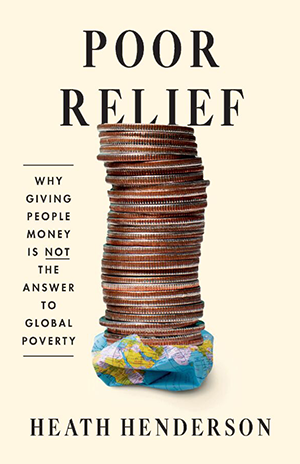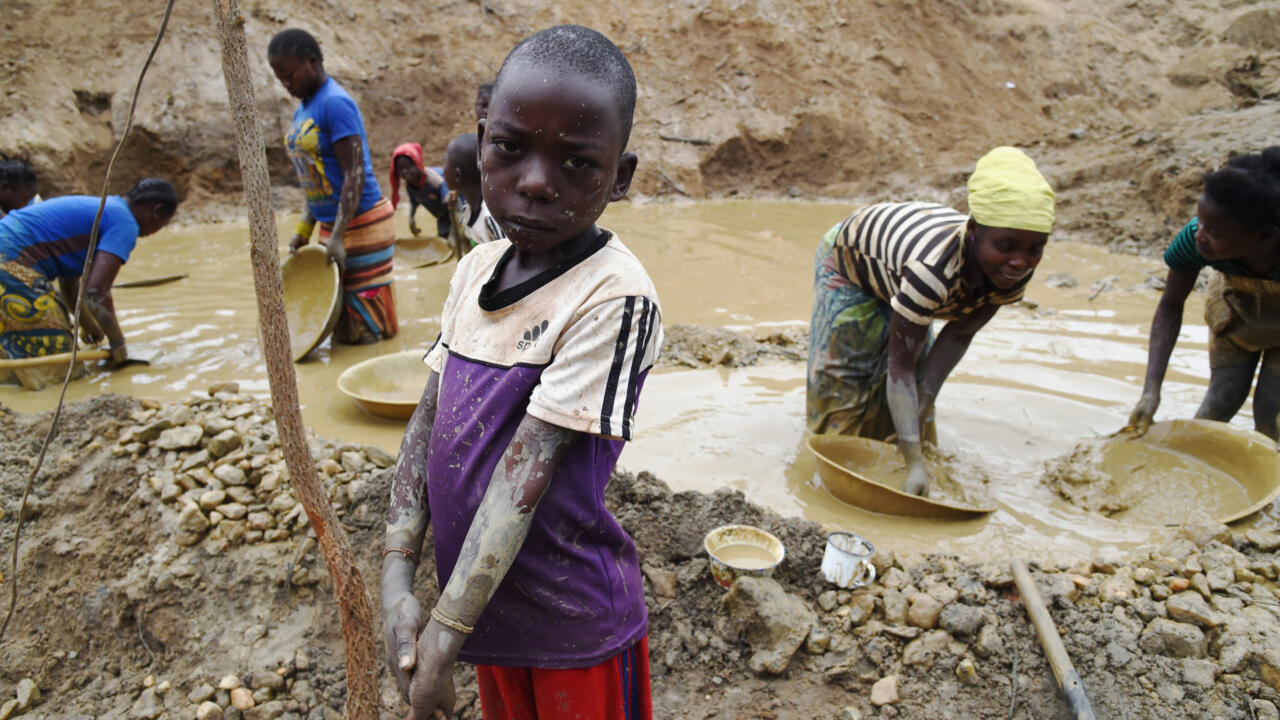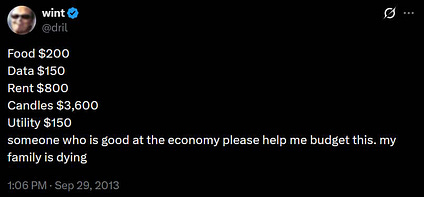No Magic Bullet (SSIR) – Stanford Social Innovation Review

Report on the Efficacy of Cash Transfers for Poverty Alleviation and Sustainable Development Goals
Introduction: Re-evaluating Cash Transfers in the Context of the SDGs
The global effort to eradicate extreme poverty, a primary objective of Sustainable Development Goal 1 (SDG 1: No Poverty), affects over 800 million people. A prevailing strategy endorsed by international organizations, governments, and non-profits is the direct distribution of money through cash transfer programs. However, an analysis of these programs reveals significant limitations that may impede progress not only on SDG 1 but across the broader 2030 Agenda for Sustainable Development.
Systemic Limitations of Cash Transfer Programs
Failure to Address Structural Barriers to Sustainable Development
Cash transfer programs are often insufficient in addressing the deep-rooted, structural issues that perpetuate poverty. Their focus on providing financial resources overlooks the multi-dimensional nature of deprivation. Key areas where cash transfers fall short include:
- Inadequate Access to Essential Services: Money alone cannot create or guarantee access to quality education (SDG 4) or healthcare (SDG 3), which are fundamental for long-term poverty escape.
- Overlooking Systemic Discrimination: These programs do not inherently combat systemic barriers such as sexism (undermining SDG 5: Gender Equality) or racism, which contribute to economic and political exclusion (contrary to SDG 10: Reduced Inequalities and SDG 16: Peace, Justice and Strong Institutions).
- Inability to Procure Public Goods: Critical elements for sustainable livelihoods, such as a stable climate, clean water (SDG 6), and access to markets, cannot be purchased by individuals and require collective public investment.
Disproportionate Impact on Vulnerable Populations
A critical flaw in many cash transfer models is their tendency to leave behind or actively harm the most vulnerable populations. This approach can exacerbate existing inequalities, directly challenging the objective of SDG 10. The elderly, persons with disabilities, and women often face unique barriers that prevent them from accessing or benefiting from cash-based aid, thereby deepening their marginalization.
Case Study: Direct Benefit Transfer (DBT) in Jharkhand, India
Program Overview and Beneficiary Opposition
In 2017, the government of Jharkhand implemented a trial DBT program, replacing a system of subsidized food grains with direct cash payments. This policy shift, directly related to food security (SDG 2: Zero Hunger), was met with significant resistance. A protest involving over a thousand people highlighted widespread dissatisfaction, with subsequent surveys indicating that nearly 97% of residents in the pilot area of Nagri opposed the program.
Identified Failures and SDG Implications
The DBT experiment revealed several operational and systemic failures with direct consequences for multiple SDGs:
- Logistical Hurdles and Economic Costs: Beneficiaries faced significant challenges in accessing their funds, including confusion over payment schedules, the need for multiple trips to banks, and reliance on costly middlemen. This resulted in lost wages and productivity, undermining SDG 8 (Decent Work and Economic Growth), and in some cases, required children to miss school to perform household duties, impacting SDG 4 (Quality Education).
- Exclusion of Vulnerable Groups: An official audit confirmed that the most vulnerable—including the elderly, the disabled, and the ailing—were the least likely to successfully claim their benefits. This failure directly contravenes the principle of “leaving no one behind” and worsens outcomes related to SDG 3 (Good Health and Well-being) and SDG 10 (Reduced Inequalities).
- Gender-Specific Barriers: Women faced particular difficulties due to constrained mobility and lower rates of mobile phone ownership, a key technology for modern banking. These barriers reinforce gender-based disadvantages, hindering progress toward SDG 5 (Gender Equality).
Broader Implications for Development Policy
Displacement of Public Goods Investment
A focus on cash transfers can displace government investment in essential public goods that communities themselves prioritize. A 2018 poll in Bihar, India, revealed strong preferences for public investment over individual cash payments:
- 86% of respondents preferred investments in public health (SDG 3).
- 65% of respondents preferred investments in improved roads and infrastructure (SDG 11: Sustainable Cities and Communities).
This indicates a disconnect between top-down policy solutions and the expressed needs of populations living in poverty.
Unintended Consequences and Reinforcement of Inequality
Poorly designed cash programs can have severe, unintended consequences that reinforce structural problems. The Devi Rupak program in India, for example, aimed to combat gender discrimination but attached conditions related to family size. This led to an increase in sex-selective abortions as families sought to ensure their only child was male to qualify for benefits, a catastrophic outcome that directly undermined SDG 5 (Gender Equality).
Conclusion: A Call for a Democratic, Bottom-Up Approach to Achieving the SDGs
The evidence suggests that cash transfers are not a universal solution for poverty eradication. While potentially useful in some contexts, their limitations demonstrate that they cannot replace comprehensive, structural interventions. An effective strategy for achieving SDG 1 and the broader 2030 Agenda requires a more democratic and bottom-up approach. Alleviating poverty sustainably necessitates policies that are responsive to the voices of affected communities and prioritize investments in public goods and services, thereby building inclusive and resilient institutions as envisioned by SDG 16.
Analysis of Sustainable Development Goals in the Article
1. Which SDGs are addressed or connected to the issues highlighted in the article?
-
SDG 1: No Poverty
- The entire article is centered on the theme of alleviating extreme poverty. It opens by stating, “Over 800 million people worldwide still live in extreme poverty,” directly addressing the primary goal of SDG 1. The text critically evaluates cash transfers as a strategy for poverty reduction.
-
SDG 2: Zero Hunger
- The article discusses India’s National Food Security Act of 2013, which aimed to provide “adequate amounts of quality foodgrains at affordable prices.” The case study of the Direct Benefit Transfer (DBT) program in Jharkhand, which replaced subsidized rice with cash, is a central example, highlighting issues of food access and security for low-income households.
-
SDG 5: Gender Equality
- The text identifies sexism as a “deep, structural issue” that keeps people poor. It provides a specific example of the Devi Rupak program in India, which inadvertently “increased the number of first pregnancies subjected to sex-selective abortions.” It also notes that women are often left behind by cash programs due to constrained mobility and lower access to technology, citing that only “28 percent of women, versus 43 percent of men” owned mobile phones in India.
-
SDG 10: Reduced Inequalities
- The article emphasizes that cash transfer programs can fail to reach or even harm the most vulnerable populations. It states that “the elderly, the disabled, the ailing and the most vulnerable” were the least likely to claim their benefits under the DBT program. This directly relates to the goal of reducing inequalities and ensuring the inclusion of all, irrespective of age or disability.
-
SDG 16: Peace, Justice and Strong Institutions
- The article touches upon issues of governance and institutional effectiveness. It mentions “political exclusion” as a barrier to poverty alleviation and highlights severe corruption in the previous in-kind food distribution system, where an audit found “85 percent of food grains were siphoned off by corrupt middlemen.” The call for a “bottom-up, democratic alternative” that is “responsive to the voices of people in poverty” speaks directly to the need for inclusive and accountable institutions.
2. What specific targets under those SDGs can be identified based on the article’s content?
-
Under SDG 1 (No Poverty):
- Target 1.1: Eradicate extreme poverty for all people everywhere. The article’s core subject is the fight against extreme poverty, with the opening sentence quantifying the problem: “Over 800 million people worldwide still live in extreme poverty.”
- Target 1.3: Implement nationally appropriate social protection systems and measures for all. The cash transfer programs (like DBT) and the in-kind food subsidy system discussed are examples of social protection systems designed to support the poor and vulnerable.
-
Under SDG 2 (Zero Hunger):
- Target 2.1: End hunger and ensure access by all people, in particular the poor and people in vulnerable situations, to safe, nutritious and sufficient food all year round. The article’s discussion of India’s National Food Security Act and the system providing rice for “one rupee per kilogram” directly addresses this target of ensuring access to affordable food for low-income households.
-
Under SDG 5 (Gender Equality):
- Target 5.1: End all forms of discrimination against all women and girls everywhere. The article highlights how the Devi Rupak program, intended to combat gender discrimination, instead made the problem of sex-selective abortions worse, demonstrating a failure to address the root causes of discrimination.
- Target 5.b: Enhance the use of enabling technology, in particular information and communications technology, to promote the empowerment of women. The article implies a challenge to this target by pointing out the gender gap in mobile phone ownership in India (“28 percent of women, versus 43 percent of men”), which limits women’s ability to access benefits from technology-based programs.
-
Under SDG 10 (Reduced Inequalities):
- Target 10.2: Empower and promote the social, economic and political inclusion of all, irrespective of age, sex, disability, etc. The article shows how the DBT cash program failed this target, as an audit revealed that “the elderly, the disabled, the ailing and the most vulnerable” were the least likely to claim their benefits, leading to their exclusion.
-
Under SDG 16 (Peace, Justice and Strong Institutions):
- Target 16.5: Substantially reduce corruption and bribery in all their forms. The article provides a stark example of failure in this area, citing a statistic that “85 percent of food grains were siphoned off by corrupt middlemen” in a previous food aid system.
- Target 16.7: Ensure responsive, inclusive, participatory and representative decision-making at all levels. The protest in Nagri, where “Nearly 97 percent of Nagri residents opposed DBT,” and the author’s call for a “bottom-up, democratic alternative” that is “responsive to the voices of people in poverty” directly relate to this target.
3. Are there any indicators mentioned or implied in the article that can be used to measure progress towards the identified targets?
-
For SDG 1 (No Poverty):
- Indicator 1.1.1 (Proportion of population below the international poverty line): The article explicitly mentions the global scale of the problem: “Over 800 million people worldwide still live in extreme poverty.”
- Indicator 1.3.1 (Proportion of population covered by social protection floors/systems): The article provides data on the reach and effectiveness of a specific social protection system. An audit showed that the average beneficiary of the DBT program had claimed only “3.6 of the six installments to which recipients were entitled,” indicating a gap in coverage and access.
-
For SDG 5 (Gender Equality):
- Indicator 5.b.1 (Proportion of individuals who own a mobile telephone, by sex): The article provides a direct statistic for this indicator in the context of India: “only about 36 percent of India’s 1.3 billion people owned mobile phones, with devices in the hands of just 28 percent of women, versus 43 percent of men.”
- A negative indicator for gender equality is also provided: a cash transfer program “increased the number of first pregnancies subjected to sex-selective abortions by somewhere between 1.0 and 2.3 percent.” This measures a harmful unintended consequence related to gender discrimination.
-
For SDG 10 (Reduced Inequalities):
- The article implies an indicator for inclusion by highlighting who is left behind. The finding that “the elderly, the disabled, the ailing and the most vulnerable” were the least likely to claim benefits serves as a qualitative and quantitative (based on the audit of claimed installments) measure of a program’s failure to be inclusive.
-
For SDG 16 (Peace, Justice and Strong Institutions):
- Indicator related to Target 16.5 (Reduce Corruption): A specific historical data point is given to measure corruption in a public service: “an audit of 2004-2005 distributions that 85 percent of food grains were siphoned off by corrupt middlemen.”
- Indicator related to Target 16.7 (Responsive and Inclusive Decision-Making): The article provides measures of public opinion and participation. The fact that “over a thousand people there amassed to protest” and that a poll showed “Nearly 97 percent of Nagri residents opposed DBT” are clear indicators of public dissatisfaction and a lack of responsive governance.
4. Summary Table of SDGs, Targets, and Indicators
| SDGs | Targets | Indicators |
|---|---|---|
| SDG 1: No Poverty |
1.1: Eradicate extreme poverty.
1.3: Implement social protection systems. |
– Number of people in extreme poverty (mentioned as “Over 800 million people worldwide”). – Proportion of entitled benefits received by beneficiaries (average beneficiary claimed only “3.6 of the six installments”). |
| SDG 2: Zero Hunger | 2.1: End hunger and ensure access to food for all, especially the poor and vulnerable. |
– Implementation of food security policies (e.g., India’s National Food Security Act). – Price of subsidized food (e.g., “one rupee per kilogram rice”). |
| SDG 5: Gender Equality |
5.1: End all forms of discrimination against women and girls.
5.b: Enhance the use of enabling technology for the empowerment of women. |
– Increase in sex-selective abortions due to policy flaws (mentioned as “between 1.0 and 2.3 percent”). – Proportion of individuals owning a mobile phone, by sex (In India, “28 percent of women, versus 43 percent of men”). |
| SDG 10: Reduced Inequalities | 10.2: Empower and promote the social, economic and political inclusion of all, irrespective of age, sex, disability, etc. | – Access to social protection benefits by vulnerable groups (the “elderly, the disabled, the ailing and the most vulnerable” were least likely to claim benefits). |
| SDG 16: Peace, Justice and Strong Institutions |
16.5: Substantially reduce corruption.
16.7: Ensure responsive, inclusive, and participatory decision-making. |
– Percentage of aid diverted by corruption (“85 percent of food grains were siphoned off”). – Level of public opposition to a government program (“Nearly 97 percent of Nagri residents opposed DBT”). |
Source: ssir.org
What is Your Reaction?
 Like
0
Like
0
 Dislike
0
Dislike
0
 Love
0
Love
0
 Funny
0
Funny
0
 Angry
0
Angry
0
 Sad
0
Sad
0
 Wow
0
Wow
0















































/environment-climate-change-and-health-(ech)/water-sanitation-hygiene-and-health-(wsh)/landfill-tuvalu-36092.tmb-1200v.jpg?sfvrsn=5c21fe40_1#)


.jpg.webp?itok=0ZsAnae9#)

























